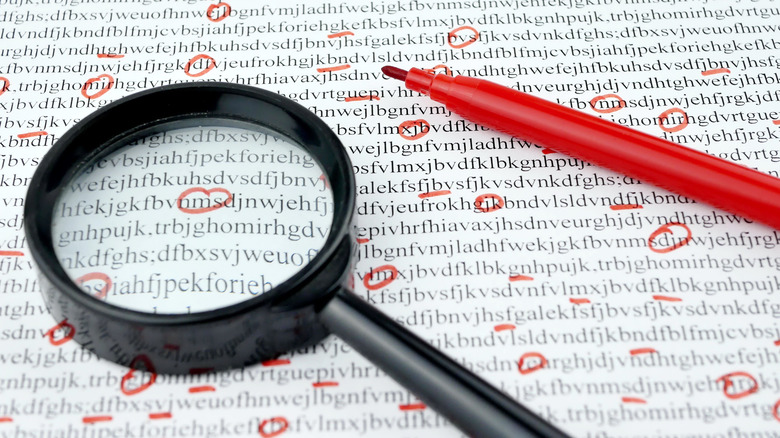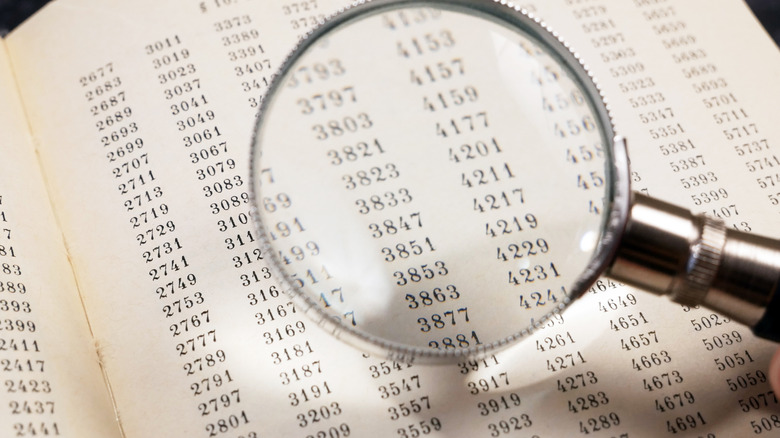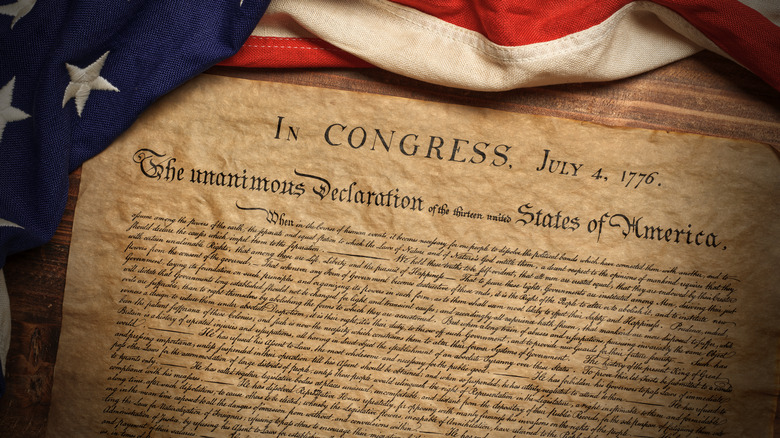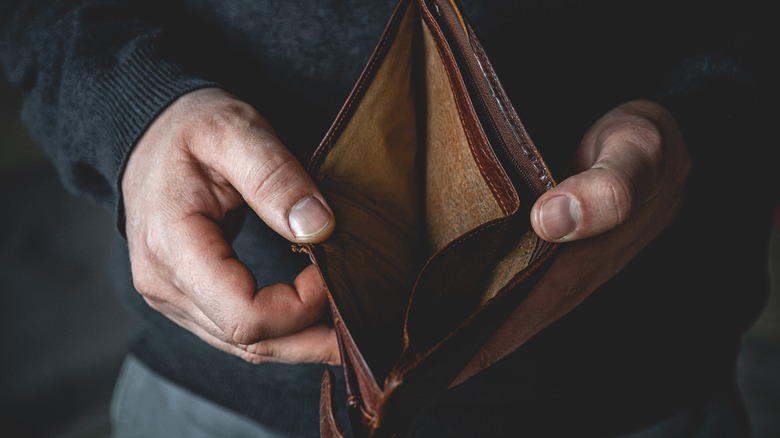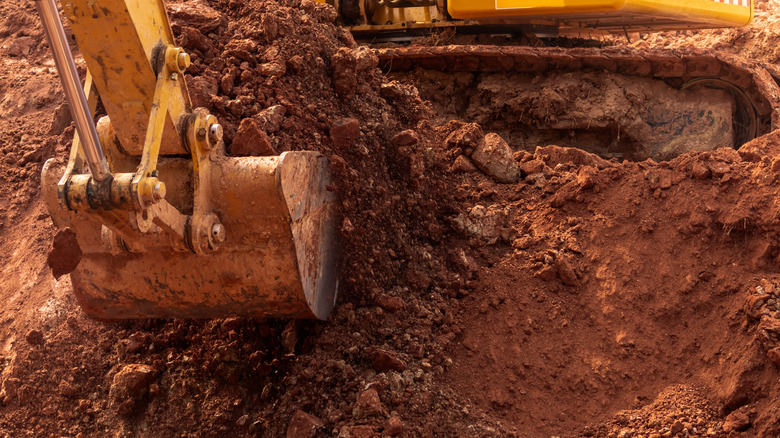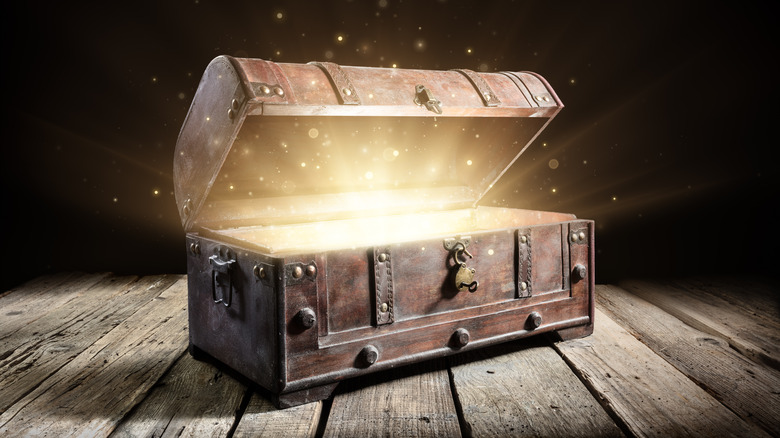The Unsolved Mystery Of The Beale Cyphers
The lure of hidden treasure has been a staple of fiction and popular culture for centuries. For example, the Robert Louis Stevenson tale of "buccaneers and buried gold" got British children interested in pirates and buried loot way back in the late 19th century, even though there are far more tales and legends of buried pirate treasure than there are actual pirates who buried their treasure, per History.
Of course, the idea of buried treasure, waiting to be found by the lucky person who happens to be in the right place at the right time, isn't just limited to pirates. Explorers and adventurers who never set foot on a ship have also claimed to have found — and buried — vaults of treasure. Indeed, as KSWO reports, real outlaw Jesse James is reported to have buried stolen gold and cash somewhere in Oklahoma, and hunters are looking for it to this day, whether or not it actually exists.
For about a century and a half, rumors of a buried treasure in Virginia have lured seekers, all of whom have left empty-handed. As an added bonus, the man who supposedly buried the treasure has provided seekers with its exact location, and all you have to do is break a code that has baffled cryptographers, mathematicians, and even the military.
The Beale Cyphers turned up in 1885
According to The UnMuseum, the saga of the Beale Cyphers began in 1885 when a person using the name "James B. Ward" published a pamphlet that purported to explain the origin of a buried treasure and contained three cyphers that supposedly direct the reader to it. Specifically, the pamphlet claims that an adventurer named Thomas J. Beale amassed treasure in Mexico, brought it back to Virginia, and buried it somewhere in Montvale in Bedford County, Virginia, around 1822. The legend goes on to say that Beale provided a local innkeeper named Robert Morris with a box containing some documents and then promptly disappeared. Decades later, Morris opened the box and, among other documents, found three cyphers.
Each of these cyphers is a list of numbers separated by commas and spaces. Mental Floss reports that only the second one has been cracked, and it lays out the contents of the supposed treasure: hundreds of pounds of gold, silver, and jewels worth — depending on whom you ask — $40-60 million in 2021 dollars. Meanwhile, the first cypher, supposedly detailing where the treasure is, remains unsolved, as does the third, which supposedly identifies Beale's next-of-kin.
Cracking the code
As Mental Floss notes, the three cyphers are supposedly simple substitution cyphers – which is to say, each digit represents a single letter. Further, the solution to each cypher lies in finding a "key" passage that serves as the basis for the substitution. And in the case of the second Beale Cypher, that key is the Declaration of Independence. Specifically, the first number in the cypher is 115, and 115th word in the Declaration of Independence is "instituted," so 115 equals "I." Using this method, the first sentence of the second cypher reads, "I have deposited in the county of Bedford, about four miles from Buford's, in an excavation or vault, six feet below the surface of the ground."
If the remaining cyphers are "book cyphers" (as such puzzles are called), then solving them should be a simple matter of finding the right key text and going from there. The problem is, over the decades, just about every book anyone can think of — the Bible, the Constitution, the Magna Carta — have purportedly been tried, without success, according to Puzzle Nation. So the key may be some obscure bit of text that no one has thought to try yet; or it could be something "Beale" might have written; or there may be no key at all because the entire thing is a hoax (more on that later).
People have gone broke trying to find the treasure
More than one person has come to the belief that they've solved the first Beale Cypher, or that they've divined the location of the treasure absent the solution to the cypher, and have spent their last dime trying — and failing — to find it (via Mental Floss). One treasure hunter, Stan Czanowski, purportedly spent $70,000 on dynamite and bulldozers during a seven-year period, only to find nothing. A woman supposedly cashed a disability check and set about searching a local graveyard, only to unearth human remains and then promptly be shown the way out of the county, with instructions to think twice before coming back. Another man supposedly spent months in town, blasting rocks with dynamite, before leaving empty-handed and still owing money to the motel where he'd been staying.
Author Peter Viemeister, who wrote the book "The Beale Treasure: A History of a Mystery," likened the lure of the treasure to that of drug addiction (another quick way to go broke). "Once you get the Beale treasure in your system, it is hard to get it out. You could get possessed by it. Like drugs or gambling, it can lead a vulnerable person to stake everything on a dream," he said.
Locals are up to here with treasure hunters
By now, you may have noticed another problem associated with the Beale treasure: people showing up in a small Virginia town with dreams and sometimes dynamite and/or excavating equipment, tearing things up willy-nilly to dig up something that may not even exist. Oftentimes, that has led to private property being destroyed. "People would sneak onto their land and blow big holes out of the ground and leave them that way. Cows would step in and break their legs. Most people here have resented it," said a local Beale expert, Mental Floss reports. Similarly, local landowner Danny Johnson said that treasure hunters have turned up, gotten permission from landowners to dig — with promises of making things right when they're done — and then leaving, broke, with the landowner left with putting things back together.
The feds have had enough, too. Much of the land around Montvale is federally owned, and treasure hunters have destroyed federal property in their zeal to turn up the treasure.
The whole thing might very well be a hoax
There's an old saying that says, "If it sounds too good to be true, it probably is." And the idea of millions of dollars of buried treasure — yours for the finding if you just solve a puzzle — has "too good to be true" written all over it.
Indeed, there's some pretty compelling evidence that the whole thing is a ruse, according to New Scientist. For example, a computer analysis carried out in the 1980s revealed that the unsolved cyphers contain long strings of letters in alphabetical order; in other words, not the location of a treasure, but random gibberish. Further, the solved cypher — decrypted using the Declaration of Independence — actually used a "rare or unique" version of the document as its key, according to How Stuff Works. And the person who broke the code 60 years after Beale wrote it somehow managed to have the exact same version that Beale had? "It's almost impossible," says Klaus Schmeh, author of the book, "Codebreaking: A Practical Guide."
